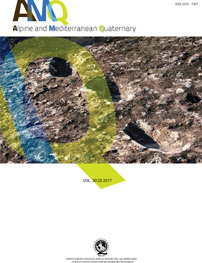Late Pleistocene bat assemblage with Eptesicus nilssonii from Grotta del Fossellone (Southern Latium, Central Italy)
Main Article Content
Abstract
The study of the Late Pleistocene fossil assemblage of bats from the Grotta del Fossellone (Circeo promontory, Central Italy) has revealed the presence of six species, Rhinolophus ferrumequinum, Rhinolophus euryale, Myotis (Myotis) blythii, Myotis (Leuconoë) capaccinii, Eptesicus nilssonii and Miniopterus schreibersii. In the late Mousterian and Aurignacian levels of the cave (MIS 3), only M. blythii is observed, indicating open spaces around the cave. In the Gravettian levels (MIS 2) all the species mentioned are present, which indicates a mosaic environment with forested areas alternating with open spaces (grassland or steppe) and wetlands. Particularly interesting is the presence of E. nilssonii, the only species of the assemblage currently distributed in Central and Northern Europe. The Italian Peninsula, and particularly its central and southern parts, have evidently acted as a glacial refugium during the Last Glacial Maximum for the boreal species that later, in the Lateglacial and Holocene, expanded its distribution to the northern regions recolonizing the lands liberated from the glacial coverage.
Article Details
Issue
Section

This work is licensed under a Creative Commons Attribution-NonCommercial-NoDerivatives 4.0 International License.
The Author grants usage rights to others using an open license (Creative Commons or equivalent) allowing for immediate free access to the work and permitting any user to read, download, copy, distribute, print, search, or link to the full texts of articles, crawl them for indexing, pass them as data to software, or use them for any other lawful purpose.

